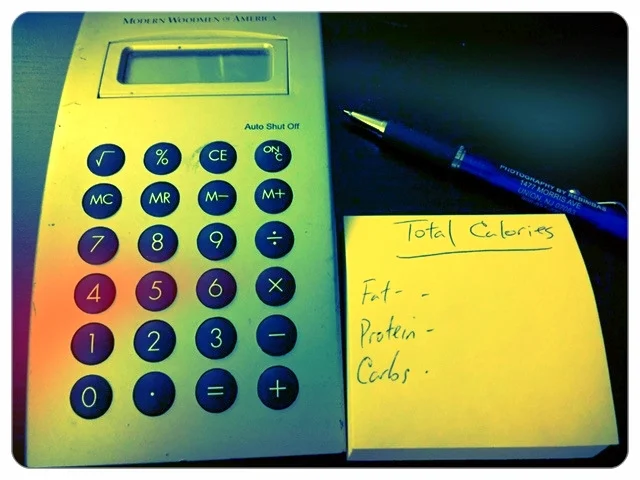How To Count Macros for Beginnners
Counting "macros" is a shorter and lamer sounding way of saying that you are counting macro-nutrients.
A macronutrient is a food that provide nutrients for the body (i.e. fats, protein, carbohydrates)
For our bodies to operate at its fullest potential, it should be fed a balanced ratio of these macro-nutrients to meet all dietary and hormonal needs. When your diets is dialed in, it starts to feel like you are on cloud 9. Your workouts are better and you generally have much better energy levels throughout the day. For those new to this process, I wanted to give you a few simple starting points to get you on your way.
Simple Steps
1) Determine your maintenance calories
To be clear, your maintenance calories would be the amount of calories you would need to consume to stay at the same current weight.
Here’s a good starting point if you are unsure what your maintenance calories should be:
Take your body weight x 15 = maintenance calories
If you lose weight slowly, multiply by 14
If you lose weight easily, multiply by 16
For example, a normal 170 lb male would have a starting point of 2550 maintenance calories. This is just a ballpark estimate, and the only way to find out your true maintenance calories would be to track and experiment with your diet.
2) Determine goal weight/body fat percentage
Safe and sustainable body fat percentage levels can vary, and different methods of determining body fat percentages can yield different results. There are several methods of determining body fat percentage(s) such as body fat calipers and DEXA scan, but the mirror is usually the best way to figure out an estimate.
For healthy males - 8% to 17% would be a good range.
For females, 15% to 24% are good healthy ranges.
Any lower than these percentages is treading on dangerous and unhealthy territory. Abs aren't very cool if they turn you into a walking skeleton, and if they have no strength behind them.
To gain weight (more specifically muscle) – add a 10% surplus to your maintenance caloric requirements
To lose weight (more specifically body fat) – subtract a 20% calorie deficit from your maintenance caloric requirements
Caloric deficit – the amount of calories under your maintenance calories. This is what causes fat loss over time.
3500 calories = 1 lb fat
A surplus of 3500 calories over the course of time should result in about a pound of fat gain.
Conversely, a 3500 calorie deficit over the course of time should have you losing about a pound of fat.
A safe and healthy range of fat loss should be approximately 1 to 1.5 lb per week. Any more than this, and your body may start to see some negative hormonal responses. These numbers are relative as everyone's body size and type is different.
3) Determine Ratios of Protein, Fats, Carbohydrates
Once you complete step 2, figure out what percentage of your calories will come from proteins, carbs and fats:
Macronutrients
Fats = 9 calories per gram
Carbs = 4 calories per gram
Protein = 4 calories per gram
General health requirements (according to the Institute of Medicine of the National Academies)
Protein - 10-35% of daily caloric intake * according to International Society of Sports Nutrition
(.82g per lb body weight or 1g per lb of lean mass)
Fat – 20-35% of daily diet to maintain proper hormonal functions
Carbohydrates – 45 to 65% of daily diet (the rest)
My Recommendations (in order of importance)
Set Protein calories first
Get at least .82g protein per pound of body weight. Any more than 1g per pound isn't necessarily going to help your weight training, but it may help you stay full on your diet. Protein is generally more expensive, and usually causes more harm to living creatures. I think you'd be better off using those extra calories for more carbs, unless you are really struggling with your hunger.
Set Fat calories
Get at least 20% of daily calories from fats. If you want to go lower in fat calories, I wouldn't advise going lower than 15% of your total calories, as you will likely take a big hormonal hit. More than 30% in my opinion is unnecessary. It doesn't help weight training as much as carbs, so you're much better leaving those extra calories for carbs. 20-30% seems to be the sweet spot but all of these percentages are relative to the individual's goals.
Set Carbohydrates last
Whatever calories you have left, use them all for carbs! Carbs for days!!!
Carbohydrates are our bodies main source of energy, though interestingly enough it is the one macro-nutrient that we could actually live without provided we had enough protein and fat in our diet. Life is weird.
4) Execute each day (that includes weekends)
Figure out your desired macro-nutrient percentages, and then come as close as possible to those numbers while eating whatever foods you prefer. The more wholesome the food choice, the more likely you will stay full and satisfied - as well as getting the proper vitamins and minerals. However, you want to enjoy your diet as much as possible to maintain dietary adherence.
Sometimes the "whole food" choice may even cause you to go over your calories whereas the "junk-food" option may actually be the better choice in terms of fat loss. For example:
1) If you had 250 calories left for the day, and you had a choice between a bag of Skittles and a cup of oatmeal with banana (300 calories for the oatmeal + 120 calories for the banana), the bag of Skittles would actually be less calories and would be the "better" choice in terms of achieving quicker fat loss. Now this is not factoring in hunger or satiety levels. It is also not factoring in how long these carbohydrate sources will stay in our bodies for future use. The bag of Skittles is a more concentrated form of sugar that will be placed in the bloodstream for a limited time, whereas the bowl of oatmeal would still likely be in your system the following day for training or general activity purposes.
I encourage clients to incorporate some of their favorite foods into their diet as long as they can stay within their calorie goals.
5) Crush your Goal and Get Great Results
Be consistent with your numbers and have fun with it. Adjust accordingly to fit your body’s needs and preferences. If you are following a weight lifting protocol, you should monitory your diet a bit more closely for optimal results.
Use these free apps to calculate your macro-nutrients, and track your food intake. The mental aspect is the hardest part. That is where coaches like us come in:
Mike Vacanti's OTR Macros App
My Fitness Pal


